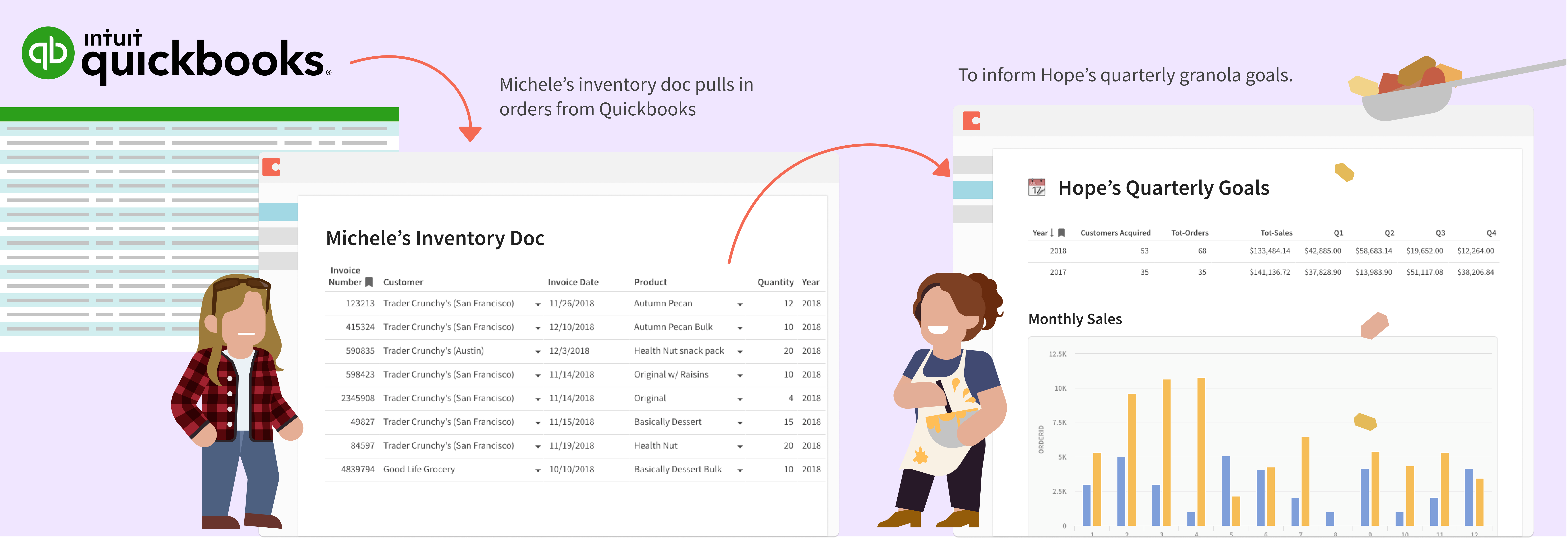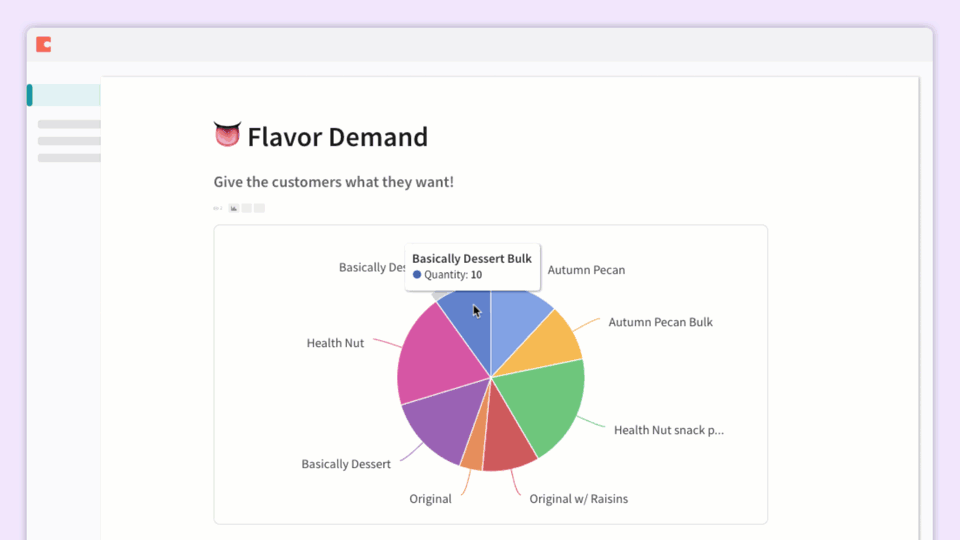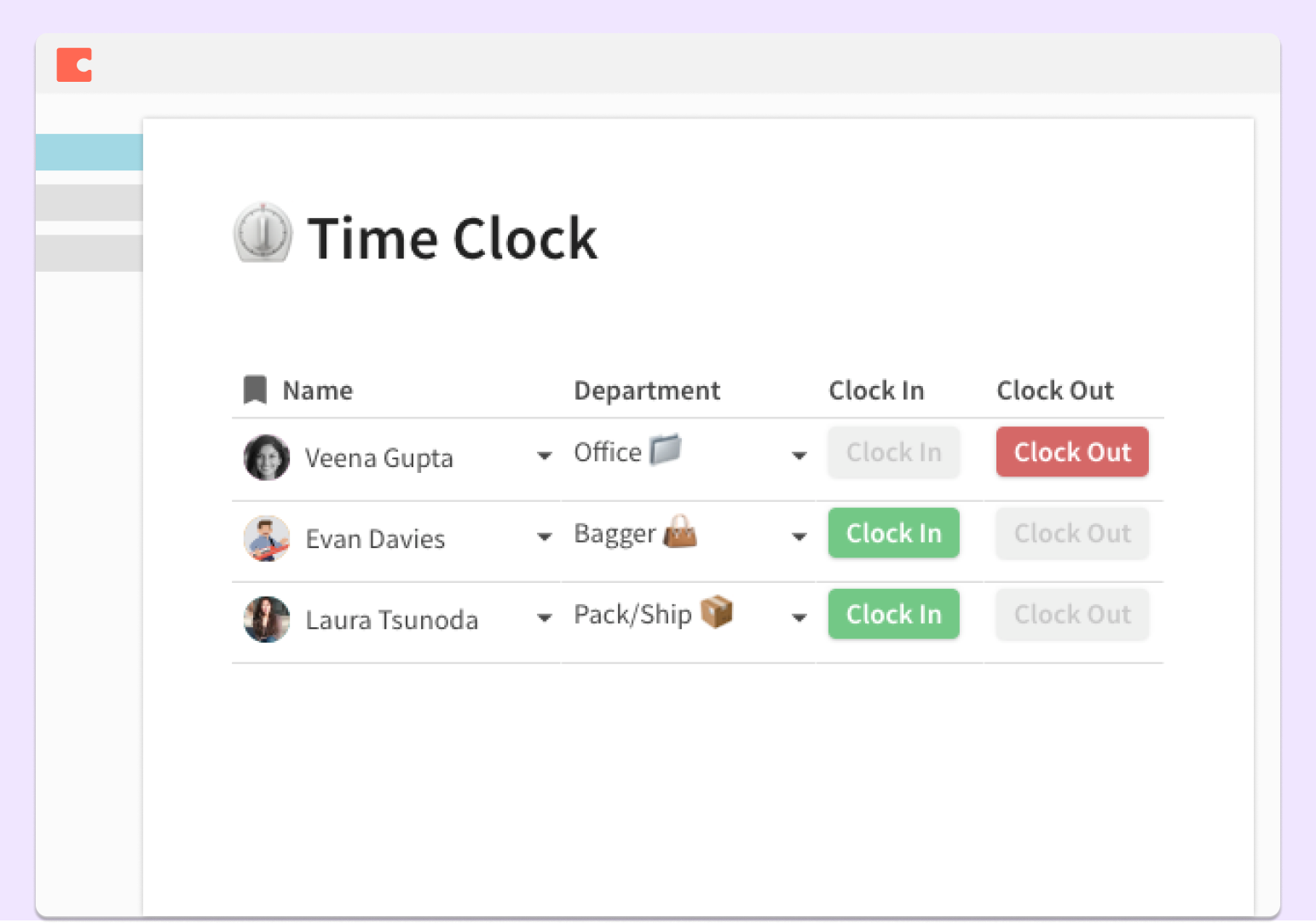Share
Explore

 Docs for all you brilliant, beautiful small businesses
Docs for all you brilliant, beautiful small businesses
Meet Hope and Michele, and the inventory-management doc they call Kamille.
Originally published 12/13/2018
Remember when you first started selling your product and you could keep track of everything in a single spreadsheet? A couple SKUs, not that many orders. Then one day you had a big break and your business took off, which was surprising and thrilling and daunting. Customers popped up from different states and countries. You went from being a one-person-show to a small business with employees and annual revenue. Your buyers were now called “markets” and “demographics” and you needed to graph stuff.
But the spreadsheet you’d been using — which “did the trick” in the beginning — couldn’t give you what you needed. (You tried drawing boxes with colored cells to fake a Gantt chart, but it got ridiculous.) So you started shopping online for a Real Business Tool, quickly realizing that Real Business Tools are expensive. Like $50 a person a month expensive. But it was worth it to solve problems A, B, and C. Then your Operations Manager insisted on buying a solution for E, necessitating a subscription to the $300/year D-E-F-G tool. On top of that, there was the added expense of the time it took to transfer data, train employees, and adjust to the new order.
Makers, we’re telling you it’s not worth it. Don’t buy it. Ditch your expensive, over-promise-y subscriptions. And make your own tool.
We’ll help.
Introducing the Coda SMB Bootcamp. In the spirit of empowering small businesses, we’re starting a SMB bootcamp — a month-long workshop for entrepreneurial makers to share tricks of the trade and build their dream docs with help of a Coda expert. It’ll consist of exclusive weekly templates, a members-only in the community, and regular feedback and guidance from your Coda concierge.
And to give you a taste of the type of docs that you can make with Coda, check out these beauties from two of our favorite makers — Michele and Hope from Hudson Henry Granola.


Hudson Henry Granola started in 2012 with a few bags of Hope’s homemade granola and a booth at Charlottesville City Market. Within a year, her granola was on the shelves at Whole Foods and featured on the Today Show. It became a full-fledged business with a small team of bakers, baggers, shippers and customers across the United States.
Scaling anything creates a mountain of data and some amount of chaos. As Hope worked to grow her business over the next year, her office manager Kamille moved on (an opportunity she couldn’t pass up), leaving Hope to handle the office work on top of managing the operations. She had a Quickbooks summary of what was going out to her wholesale customers — but no real tracking process. Opportunities were starting to fall through the cracks. For a small business, every opportunity is important.
That’s when Michele joined the packing team. Hope and Michele discovered that they both had a love of data, and that Michele had a fantastic IT background. Michele helped Hope turn data into information. Her first project — make sense of all the inventory: figure out exactly how much granola was on the shelf, which flavors were in high demand, and who was buying what.


Michele started a Coda doc to guide her as she figured everything out. She first made a table to track SKUs (products sold) and then another to organize invoices. Hudson Henry Granola uses Quickbooks for accounting, so Michele, with her seasoned technical prowess, used Zapier to automatically move Quickbooks data into a well-organized table. That way, she didn’t have to hop back and forth between Quickbooks and Coda — it could all be in one place.


The Customer Tracking Doc
Hope really wanted a way to keep track of how often her wholesale customers were ordering and what they were ordering. She wanted to set goals for customers and know when it was time to ask for an order. Michele created a pared down CRM, which, based on the information coming from Quickbooks, flags which clients need to be contacted: who was ordering what, and who could be ordering more.


The Time Clock Doc
As Hudson Henry Granola’s team grew, Hope needed to move from paper time sheets to a more scalable way to budget time. When Hope poked around the internet for time management tools, she got a $1200 quote. “Could we just do it in Coda?” Hope asked Michele.


Michele created a basic time clock: with a button to clock in, a button to clock out, and the time measured in between. And — in classic maker fashion — Michele didn’t stop there. She added a way to budget time per batch of granola — with a breakdown for time spent baking, bagging, and packing. Hope now uses this each week to run payroll.
By the way, Hudson Henry Granola is the Coda team’s holiday gift of choice. You can order this gorgeous granola
, made with love in small batches and Coda docs. Hope also has a blog where she “talks shop” at if you’d like to further explore small batch business and manufacturing.
ABOUT THE MAKERS


Hope Lawrence
Hope is the founder of the Hudson Henry Baking Co., a small-batch baking company located in the small town of Palmyra, Virginia. Formerly a Product Manager in NYC and London, she has “forgotten most of what she ever knew about Excel formulas and is grateful for the user friendliness of Coda.” She’s a self-described messy baker, but you’d never guess it based on her immaculate Coda docs.


Michele Durst
Whether it’s pieces of code, bikes, or gadgets, Michele is the type of maker who likes to fit things together. When she signed onto Hudson Henry Granola to help with Operations, Hope recommended she use Coda. Michele, no stranger to Excel and SQL, hit the ground running, designing a custom Inventory system and an awesome Quickbook-connected CRM in Coda.
Want to print your doc?
This is not the way.
This is not the way.

Try clicking the ⋯ next to your doc name or using a keyboard shortcut (
CtrlP
) instead.